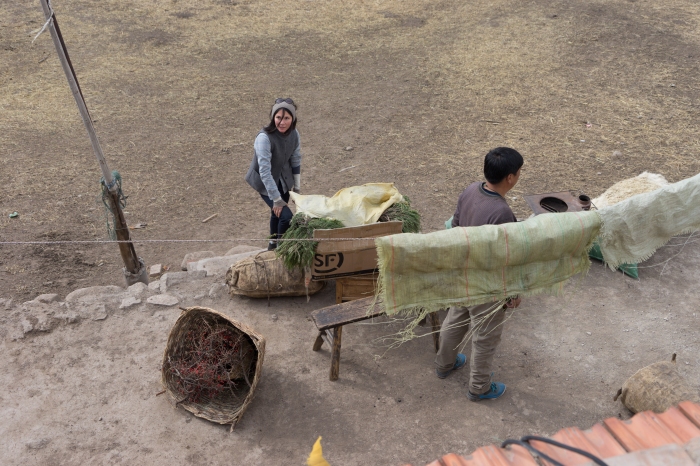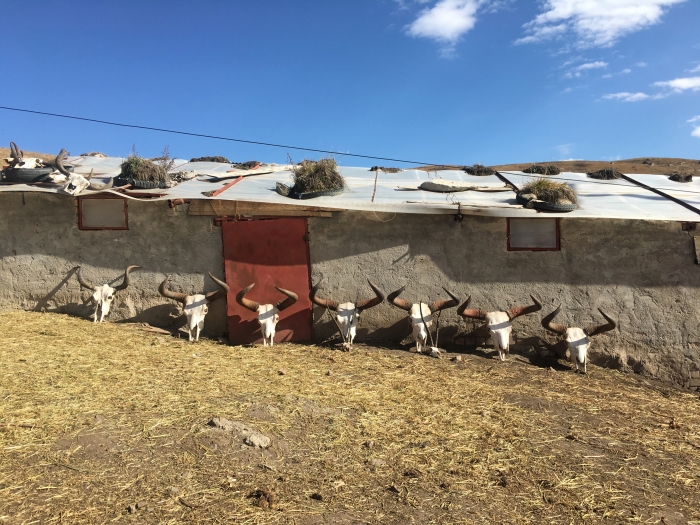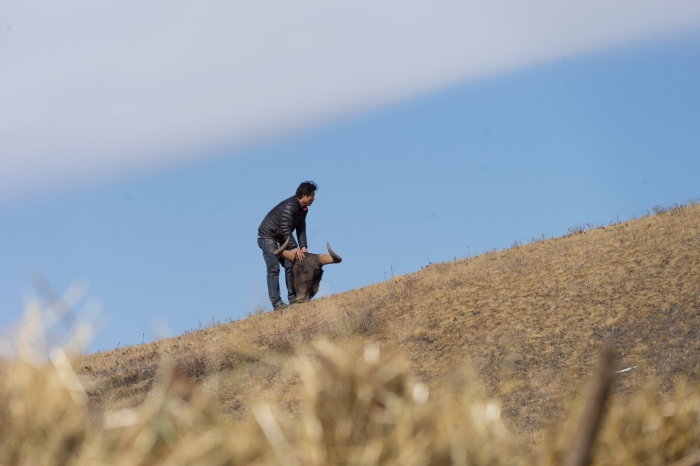I spent my first week ever in Lhasa doing what the Tibetans called ‘chojel’ the Tibetan term for pilgrimage. Every day, we visited one or more places, joining the hundreds of pilgrims come from all over Tibet and a lesser flow of tourists, Chinese with a sprinkle of foreigners. It was the beginning of winter, when nomads and farmers have less work and find time to spend time in Lhasa, shopping, visiting and praying. I was told whole areas fill up for the winter months, while Lhasa residents leave for warmer areas, returning for Losar.



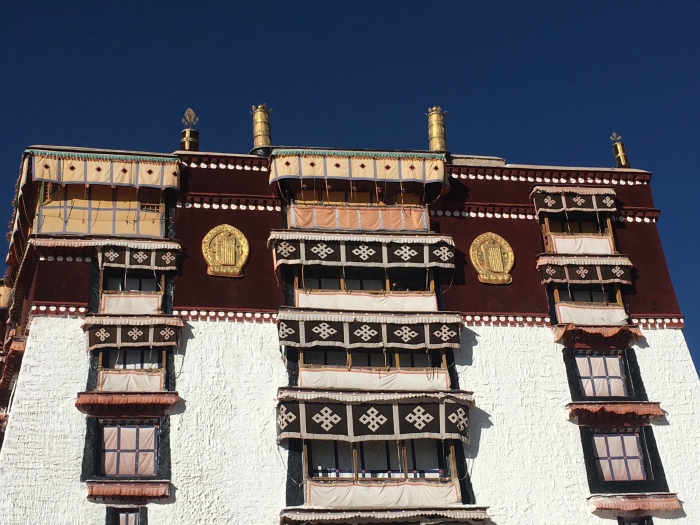









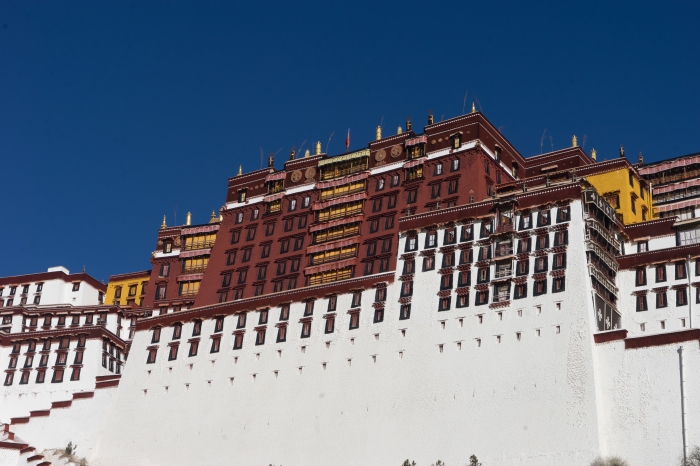



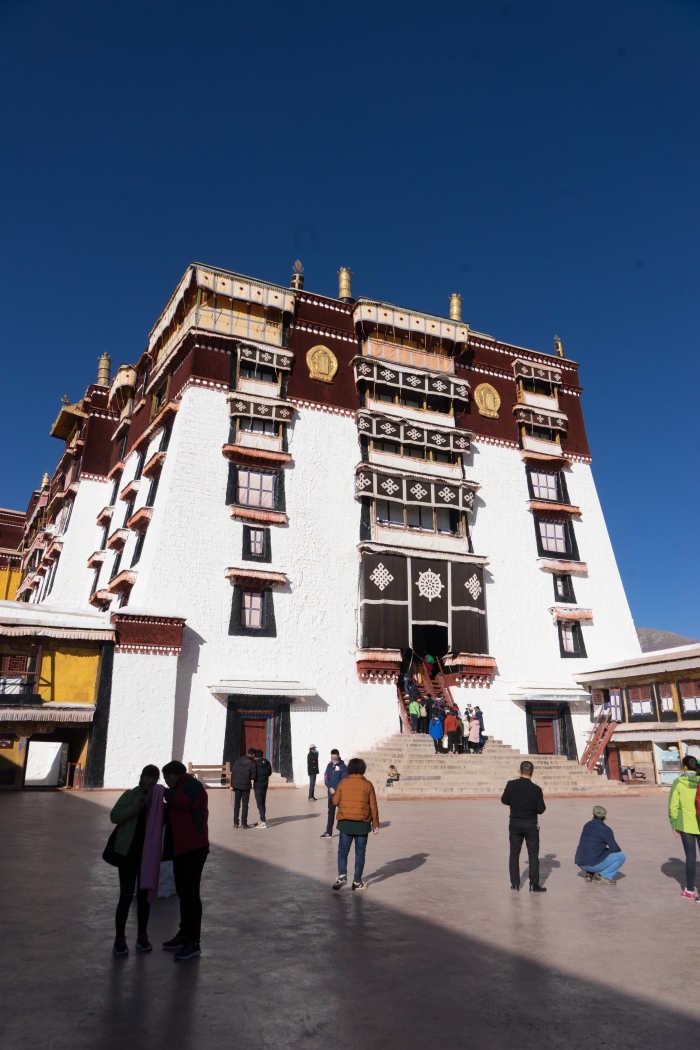

I was particularly keen to see the 13th’s Mausoleum; many of the officials had donated jewelry to adorn the stupa, and Gyeten Namgyal, who later became a monk, gave his long earring, his most prized possession, and was very proud of having secured a conspicuous spot for it in the center of the South facing side. As Head of the Guild, he was in charge of creating and sewing all the brocade ornaments, appliqued banners and thangkas to hang in the area around the stupa. His design and execution of a large banner of the Three Kings was his first publicly acclaimed feat, and he was particularly delighted with a new technique of his invention that gave relief to the work.
There are over 300 steps to climb to get to the Eastern Terrace, a large platform used for ceremonies and ritual dances, from where one enters the White Palace. One only gets to see a small part, shepherded through the tiny rooms and chapels and up and down stairs as steep as ladders. We have one hour to get through the complex, entering through the White Palace which housed the government offices and into the red Palace of the Dalai Lamas which holds the mausoleums. The place was packed full of pilgrims and tourists and we need to keep a stable pace. The richness was extraordinary; cabinets stuffed with ancient clay and bronze statues, banners and brocades, thangkas of extraordinary quality. The mausoleums were marvels in their own right, but to my disappointment, the only one not to be open to view was that of the 13th. It was accessible only through rickety stairs which were deemed unsafe, and open to the public only during the New Year. Somewhere along the way, our guide pointed to a cabinet that made the whole width of an assembly hall; it housed the Great Kyigu.


